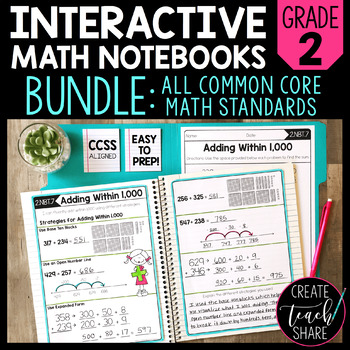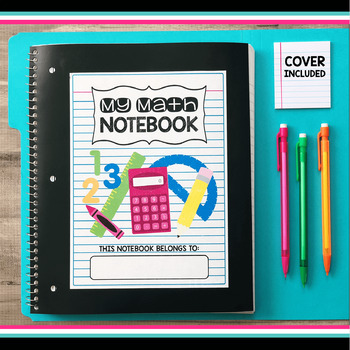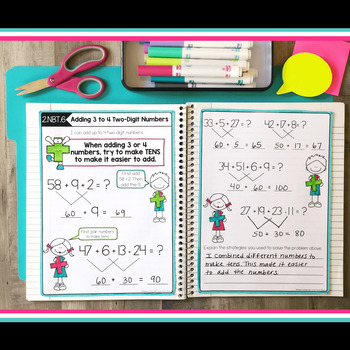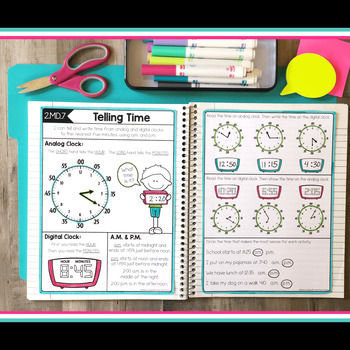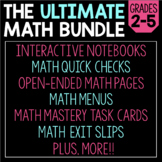Math Interactive Notebook 2nd Grade Bundle
- Zip
What educators are saying
Products in this Bundle (5)
Also included in
- This BUNDLE is a collection of all of my 2nd grade math resources!!★ Interactive Notebook Pages★ Math Quick Checks ★ Math Exit Slips★ Math Menus (Perfect for homework or early finishers!!)★ Math Mastery Task CardsFeel free to email with any questions or comments at createteachshare@gmail.comBe surePrice $44.50Original Price $56.00Save $11.50
- This BUNDLE includes everything you need for 2nd to 5th grade math!!★ Interactive Notebook Pages★ Math Quick Checks★ Math Menus (Perfect for homework or early finishers!!)★ Open-Ended Math Pages★ Math Exit Slips★ Math Mastery Task Cards★ Printables for Fractions, Decimals, Measurement, and Geometry★Price $152.95Original Price $277.80Save $124.85
Description
What are Interactive Math Notebooks?
Interactive math notebooks are teaching pages used to introduce and teach new math concepts and skills. Each set of notebook pages includes definitions, explanations, rules, and/or algorithms that may be needed to address each standard. Sample and practice problems are also included to be used for guided practice. Once completed, these notebook pages serve as anchor charts for students to refer back to as a reference tool throughout the year.
How do I use them with my students?
Notebook pages can be used to introduce, reinforce, or review math standards. They can be used for direct instruction for a whole class, or in small groups. Students first cut out the pages and other pieces, and glue them into their notebooks. With teacher guidance, students take notes and work out practice problems related to the standard being addressed. Students can then highlight or add color to their notebook pages.
What materials are needed?
→ A spiral notebook for each student.
→ Scissors
→ Glue Sticks
→ Pencils
→ Colored pencils, crayons, and/or markers (optional)
What is included in this resource?
→ Notebook pages for each standard. Each concept or skill includes a double-page spread. More than one set may be included for certain standards that cover multiple skills.
→ Student Notebook Cover
→ Table of Contents (2 to 3 pages will be needed for each student)
→ Answer Key
{For a more detailed PREVIEW, please preview each of the individual products!}

